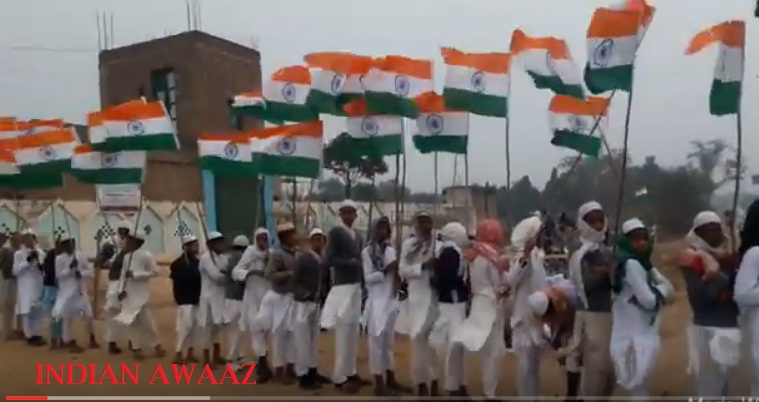
Syed Ali Mujtaba
The recently released All India Survey on Higher Education 2020–21 says the enrollment of Muslim students dropped by 8 percent from 2019-20 – that is, by 1,79,147 students. This level of absolute decline has never happened in the recent past for any group in India. Muslims represent about 15 percent of society.
UP accounts for 36 percent of that total decline followed by Jammu and Kashmir, which accounts for 26 percent, then Maharashtra (8.5 percent), Tamil Nadu (8.1 percent), Gujarat (6.1 percent), Bihar (5.7 percent) and Karnataka (3.7 percent).
While the states that have a larger share of the Muslim population account for the higher share of decline, small states too show similar trends. For instance, between 2019-20 — 2020-21, Delhi lost about 20 percent of its Muslim students while J&K lost about 36 percent.
The Sachar Committee Report (SCR) submitted in 2006 showed that the condition of Muslims in education was comparable to, or even worse than, the country’s most backward communities. Their marginalization, since then, has deepened. Initially, Muslims were slightly above Dalits. But Dalits overtook Muslims in education in 2017-18 and in 2020-21, it was the turn of the Adivasis.
If we strictly follow the age cohort 18-23, the PLFS data confirms this trend. Muslims do even worse than Dalits and Adivasis. According to this source, only about 19 percent are currently attending higher education institutions, as against 21 percent among Adivasis, 26 percent among Dalits, 34 percent Hindu OBCs, and 45 percent Hindu upper castes.
Among major states, in 2020-21 in no state did Muslims do better than Dalits except in Tamil Nadu, Telangana, and Delhi. Advasis do better than Muslims in many states such as Rajasthan, Assam, Gujarat, Maharashtra, and Jharkhand.
UP being the most populated state pulls down the national average of Muslims. Muslims, who account for about 20 percent of the state’s population, have just 4.5 percent of total enrollment. UP alone witnessed the dropout of 58,365 Muslim students from 2019-20 — a decline of 16 percent.
If UP illustrates the story of the deepening deprivation of Muslims, Kerala offers a story of upward mobility. Kerala has not only seen positive growth in enrolment, it also tops in the percentage of Muslim youth (43 percent) who are currently attending higher education. The century-old positive discrimination in favor of Muslims has helped the community to build educational capital in the state.
Muslims in Kerala enjoy 10 percent reservation in government jobs and 12 percent in educational institutions. After Ezhavas caste (14 percent), Muslims form the largest population and also claim a large share of the quota in the state’s OBC list.
While the sources of marginalization began much before, what is new is the acceleration of such marginalization in recent times. How can this be explained? A few factors might have played a role but the key role in this context is the rising Hindu majoritarianism.
First, is the bleak employment opportunities faced by Muslims as they face the highest unemployment rate among socio-religious groups? The percentage of unemployment among Muslims rose from 1.6 percent in 2018-19 to 13.2 percent in 2019-20. This data certainly reflects discrimination against Muslims in the job market. It has been found by the surveyors that the same CV is sent with Brahmin names, Dalit names, and Muslim names, and the percentage of those invited to an interview is the lowest in the case of Muslims.
Second is the weak economic condition of the Muslim candidates and they may not have enough money for higher studies as they need to work to make a living. Hence, the high dropout rate among Muslim youth in higher education is noticed.
Third, the ongoing ghettoization process of the Muslims in almost all Indian cities has restricted their spatial mobility and has forced them to withdraw into their shells, and thus lack of interest in higher education.
Lastly, the state support for Muslims has come down sharply under the BJP rule. Karnataka which had been providing Muslims a sub-quota of 4 per cent within the OBC quota was scrapped recently by the BJP government. The Ministry of Minority Affairs has stopped the Maulana Azad Fellowship dedicated to pursuing higher education for minority students from 2022-23.
The only remedy to arrest the declining trend of Muslim enrolment in higher education is that the government should evolve a positive discrimination policy for Muslims in India. The Sachar Committee Report and the Mishra Report have recommended initiating a positive discrimination policy in favor of Muslims — something some southern states have done successfully but not the states that have a high Muslim population.
What does discrimination by targeting the Muslim population intend to achieve by targeting their access to higher education wants to achieve? Obviously, it is done with the intention to manufacture second-class citizens who cannot stand up as equals to caste Hindus. But will this policy result in the harmonious development of the country?
